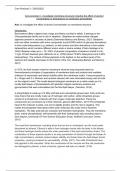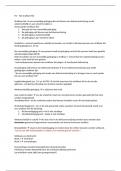Exam (elaborations)
CP3 write up- Investigate membrane structure
- Module
- Core Practicals
- Institution
- PEARSON (PEARSON)
Edexcel A Biology A level core practical Write ups. All include an introduction, hypothesis, variables, method, results, evaluations... CP3 - Investigate membrane structure, including the effect of alcohol concentration or temperature on membrane permeability
[Show more]




